No one is safe from getting burned. In everyday life or as a result of an accident, a burn scar may remain on the body. And all this is not only an unpleasant reminder of what happened, but also a violation of the aesthetics of the body. Hence the questions arise: “How to remove a burn scar and what do dermatologists advise?”
What types of burns are there?
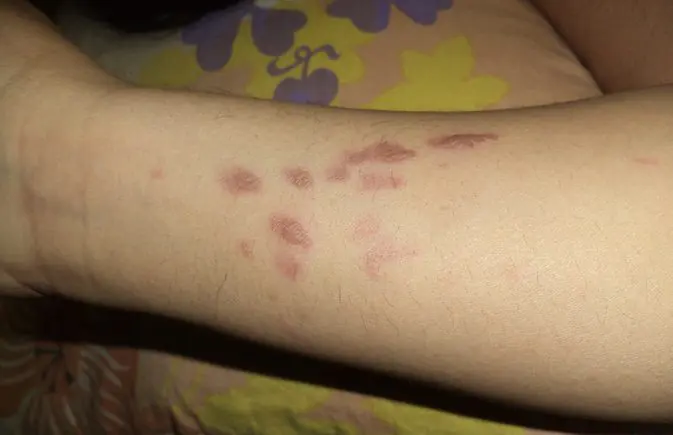
Most often, you can get a burn at home, doing this or that work or through negligence. And after the burn, a scar remains, the final appearance of which will depend on what type of burn was received.
There can be several types of burns:
- Thermal, which is the easiest to “earn.” Thermal burns can be caused by exposure to high temperatures: hot water, hot steam, hot objects, fire, direct sunlight, etc.
- Chemical burn. Those who work with chemicals, whether caustic alkalis or high concentration acids, are at risk of getting it. Upon contact with the skin, such substances begin to instantly “corrode” the top layer. If the chemical is not removed from the skin in time, the “corrosion” will spread to the deeper layers of the dermis, right down to the muscle and bone tissue. The color of the burn will depend on what substance gets on the skin: black and brown spots are left by sulfuric acid, a yellow tint is left by hydrochloric acid, yellow-green and yellow-brown are left by nitrogen, and hydrogen peroxide leaves white marks.
- Electrical burns can be caused by electric shock. At the site of injury, characteristic marks with bubbles of serous fluid remain.
Photos of burn scars confirm that each cause of burn leaves an “individual” scar. Several examples are presented in the article.
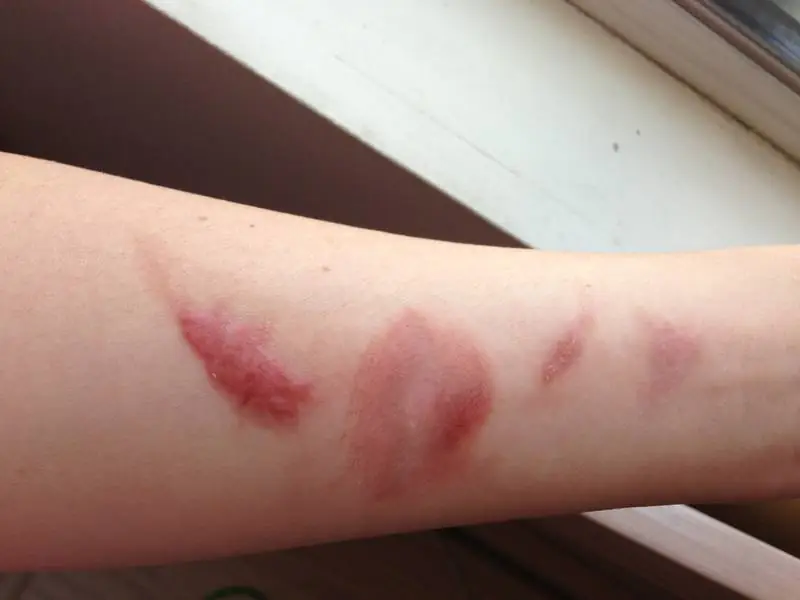
First aid
Before removing a burn scar, it is necessary for the burn to heal. But before that, you will need to provide first aid when receiving it. This does not mean that medical intervention will not be needed. On the contrary, correctly provided first aid will significantly ease the situation until the ambulance arrives (if necessary):
- Initially, it is necessary to eliminate the cause of the burn. That is, remove hot objects, fire, exposed wires, etc. from the victim. At the same time, those who are trying to help must be careful.
- After this, the burn site is freed from clothing. If the burn is severe, the fabric is carefully torn or cut off.
- In case of a thermal burn, the damaged area must be immediately cooled: cover with snow or a handful of ice cubes, and immerse in cold water. If the damage is minor, then this method will help avoid the formation of watery blisters.
- But if the injury is serious, then first you need to wrap it with a clean cloth or film, and only then direct a stream of cold water to the burned area.
- In addition to external treatment of the wound with water, it is necessary to give the victim a lot to drink in order to replenish lost fluid.
However, the measures listed are not applicable to every situation. What to do in other cases:
- If a chemical burn is caused by hydrochloric acid, then washing the wound with water is unacceptable, since the combination of acid and water releases thermal energy, and this will only worsen the situation.
- In a situation with slaked lime, the use of water is also contraindicated.
In specific cases, water is replaced with a weak soap solution.
And if you get a burn, you should absolutely not do the following:
- pierce blisters formed as a result of a wound: this will prolong the healing period and can lead to infection of the wound, and, most importantly, the liquid in the blister is blood plasma, which over time should return to its normal course;
- iodine, brilliant green, peroxide and powders should not be applied to the wound;
- It is also prohibited to treat the burn site with alcohol-containing products;
- Do not tightly bandage or rewind the damaged area.
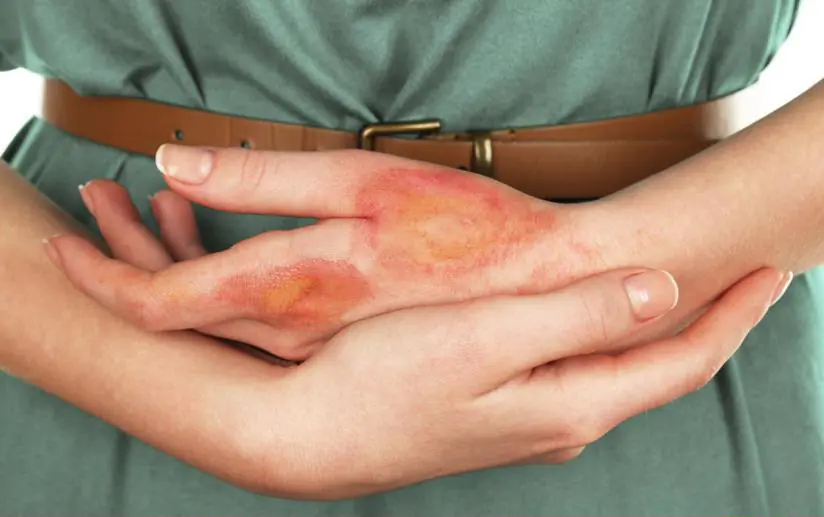
Degree of burns. How to treat scars after them?
Regardless of how the burn was received, the injury is divided into several degrees, depending on the scale. And each such degree is treated in a certain way:
- Grade 1 is expressed by profuse redness of the damaged area and its swelling. With such an injury there is no need to see a doctor. It is enough just to apply medication at home and expect healing in 7-10 days.
- Grade 2 is expressed by redness, burning and blistering. Stage 2 is also not dangerous, and you can cure it yourself at home using medication. The healing period will be up to 20 days.
- Stage 3 is recognized by the following signs: skin necrosis, swelling, hyperemia around the wound, the appearance of blisters or scabs. In this case, hospitalization is already required. Surgical treatment, drug correction, and cosmetic procedures are used. Surgical intervention and skin grafting are also possible. The recovery process takes from 2 months.
- Stage 4 is the most difficult situation. Tissue necrosis, charring of the dermis and internal tissues, sometimes down to the bone, is observed. Hospitalization is required immediately. Treatment will consist of drug correction and cosmetic procedures. Surgical intervention, including skin grafting, is not excluded.
After each degree of burn, marks in the form of scars remain on the skin. Minor injuries, grades 1 and 2, are easier to heal because they are shallow. To solve this problem, many remedies for burn scars have been developed.
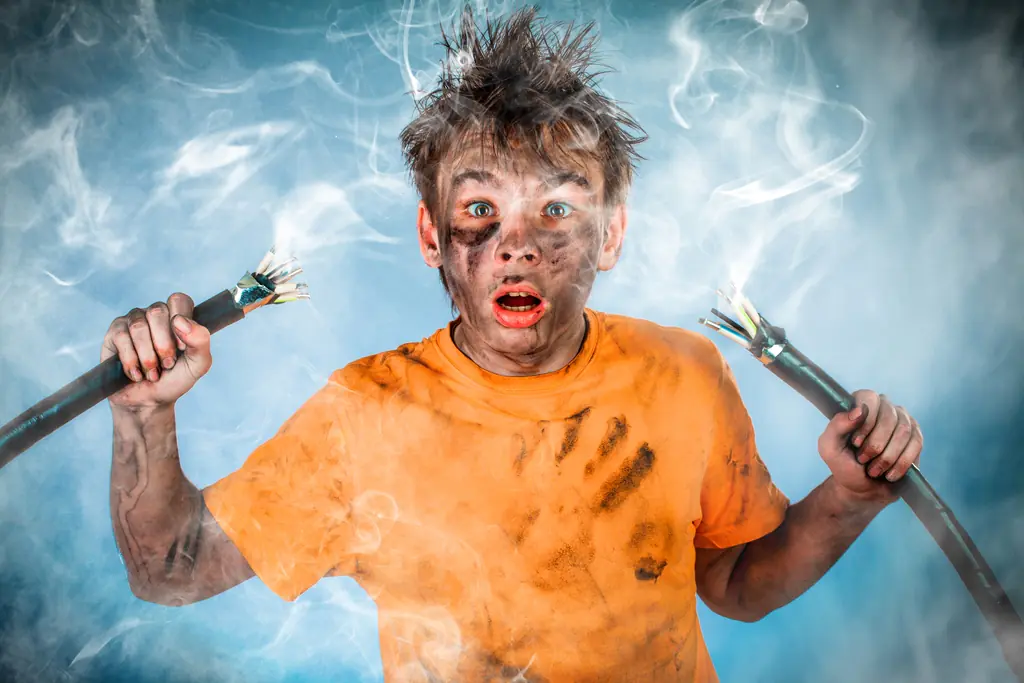
Effective creams for burn scars. What to choose from?
How to treat the consequences of burns? The most popular products that help eliminate the consequences of injury are gels, ointments and creams. For burn scars, the following have shown particular effectiveness:
- "Kontraktubeks". The gel contains heparin, which softens rough scars and restores damaged cells, allantoin relieves all discomfort during scar healing, and onion extract serves as a barrier to scar formation and also has a disinfecting effect.
- Zeraderm Ultra has a regenerating, healing, antibacterial, analgesic and anti-inflammatory effect.
- "Levomikol" is an ointment that solves the problem of removing scars after burns. The product heals, draws out suppuration, and disinfects.
- Silicone scar patch is an elastic gel plate. It is completely safe and, most importantly, effective in combating burns. Although it is dense, it does not prevent the flow of air to the wound, but it will save you from getting wet.
- "Panthenol". The product has a good moisturizing, healing and anti-inflammatory effect.
- "Kelofibrase". This ointment increases blood circulation in scar tissue, accelerates healing, and makes the scar softer.
- "Ozhogov.net" is an effective remedy, the application of which accelerates the healing effect, relieves redness, swelling, and softens scar tissue.

The presented remedies for burn scars show a good effect, but their effect does not appear immediately. It will take at least six months to achieve complete healing. Moreover, each of the presented products must be applied to the scar up to 4-6 times a day.
The listed products are often used on the recommendation of dermatologists, however, they are also suitable for independent choice, since they are harmless.
Cosmetic procedures
You can remove a burn scar - both old and very fresh - with the help of cosmetic procedures. They, of course, will cost much more than ointments and gels, but innovative technologies used in cosmetology make it possible to achieve amazing effects.
- Laser peeling. The method allows you to remove a burn scar on your face. The process is completely painless and safe. The laser beam gently removes “extra” scar cells, making the scar softer, smoother and almost invisible.
- Chemical peeling. Using a special device, a special substance enriched with fruit acid compounds is directed to the skin. Chemical peeling can whiten, smooth and soften the scar.
- Diamond grinding. Used to correct facial skin. Thanks to this method, it is possible to effectively remove even the most old and extensive burn scars.
- Glucocorticoid injections are hormonal therapy injected directly into scar tissue. The method is mainly applicable for removing keloid scars. High risk of side effects.
- Physiotherapy of 5-15 sessions: paraffin treatment, diadynamic therapy, galvanization, cryotherapy, infrared irradiation, electrophoresis, darsonvalization. The procedures are aimed at restoring the elasticity of scar tissue, softening and smoothing it.
According to the recommendations of dermatologists, it is worth starting to remove scars using cosmetic methods after the scar is fully formed. On skin that is not completely healed, the effects of various devices can be detrimental, not to mention effective.
Radical method
Radical methods that help quickly remove a burn scar include surgical methods, including skin grafting. Such measures are prescribed if more gentle treatment methods are not effective in a particular case.
Surgical treatment involves removing scar tissue, correcting damaged skin, and applying a cosmetic suture. As for plastic surgery for skin grafting, it is used quite infrequently. The event is risky, because the new skin may not take root, and there is also a high risk of keloid scars appearing on it.
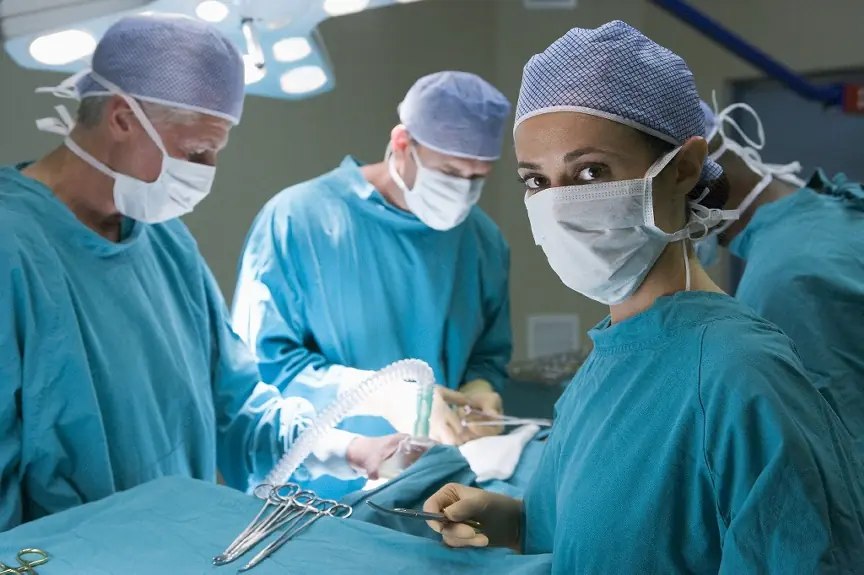
ethnoscience
Is it possible to remove a burn scar using folk remedies? There are a lot of similar methods, because everyone wants to quickly and effectively get rid of the consequences of burns, and also save money by using inexpensive means.
Traditional medicine deals with this kind of problem and has several recipes for treating burn scars.
If the burn is not serious (1st or 2nd degree), then to treat its consequences, that is, fresh scars, use the following:
- Plenty of cold water.
- Applying potatoes, lemon juice, parsley, beeswax, cosmetic clay.
Cosmetic clay in combination with water shows good results if this mixture is applied to the scar and left for 15 minutes. Twice a week is enough for the scar to noticeably lighten. This remedy for burn scars has no contraindications.
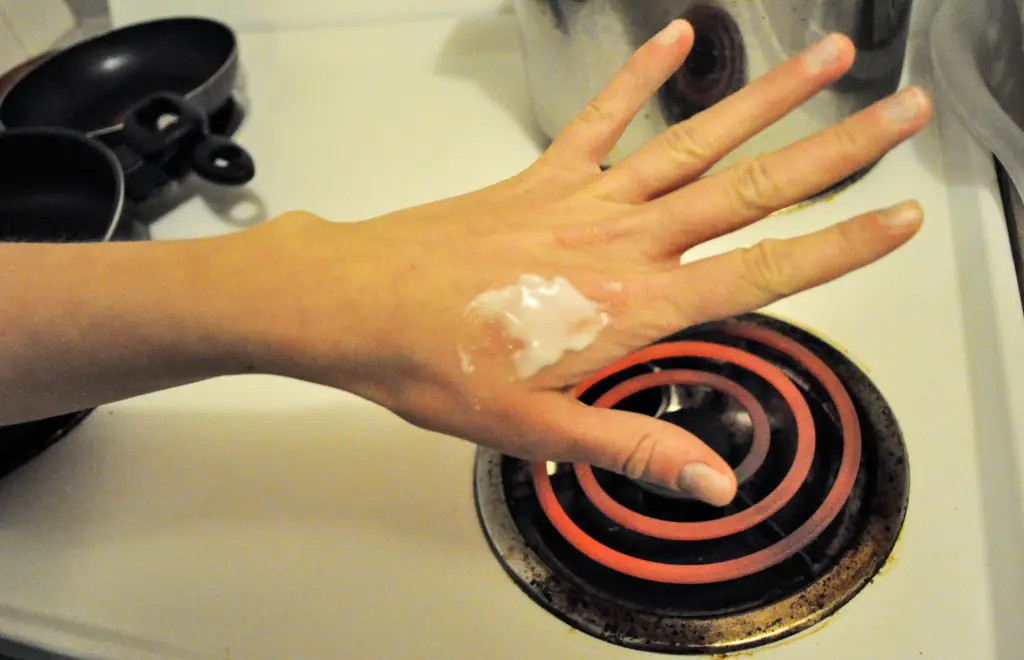
A mask is prepared from beeswax with the addition of butter (1:2), and also 10 drops of lemon juice and aloe juice are added. Apply the prepared product to the scar several times a day.
Onion juice will help heal fresh scars. It is enough just to prepare a paste from it and apply it to the affected area on the arm or leg. It is not possible to completely remove a burn scar with this remedy, but you can significantly reduce it and make it more elastic.
Although doctors have mixed opinions regarding traditional medicine, they still approve of some remedies. For example, the well-known bodyaga, which is often prescribed by many dermatologists. It is used as a mask compress a couple of times a week for several months. Bodyaga works well to remove a burn scar on an arm, leg, body, but it is better not to apply it to the face.
How can you not camouflage scars?
Many, after they have managed to remove a burn scar, do everything they can to disguise as much as possible what is left of it. Dermatologists are extremely wary of such camouflage methods, since the consequences on the skin can be unpredictable.
What are these methods:
- Getting a tattoo over a scar. Of course, this is not a bad way to remove reminders of recent burns from your memory and body. But, according to dermatologists, this should not be done, since getting a tattoo is a painful and stressful procedure for skin that is already “damaged.” There is no point in making the situation worse.
- People with severe burns should avoid direct exposure to ultraviolet radiation, be it the sun or a solarium. This causes the scar to turn red and become even more noticeable. But, since the sun cannot be avoided, doctors strongly recommend lubricating the scar with special sunscreens.
- If the burn scar is serious, then you should not self-medicate to get rid of it. Consulting a specialist in this matter will not hurt, because complex treatment may be needed to eliminate the problem, and some methods may not be suitable at all.
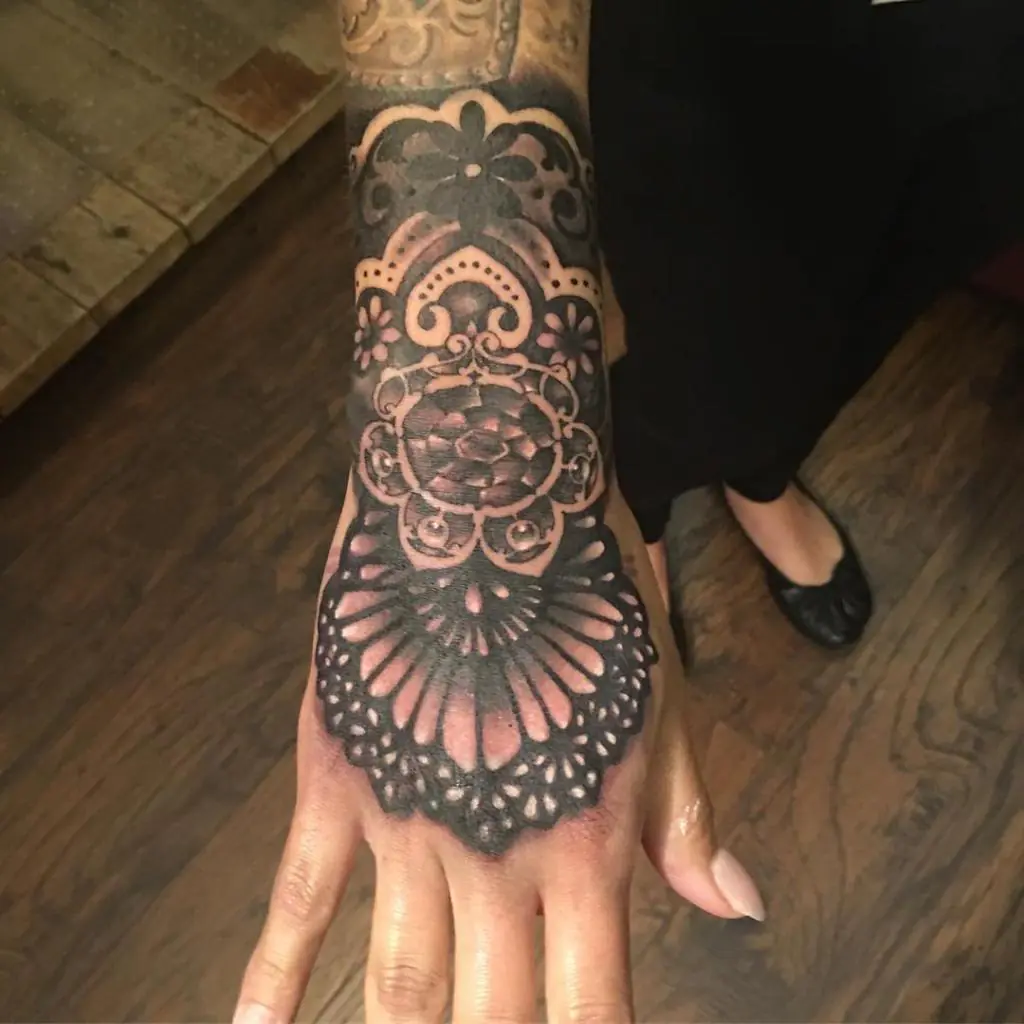
Rehabilitation
A fresh burn scar that appears requires long-term rehabilitation before proceeding with the procedures for its removal. Doctors most often prescribe the following rehabilitation methods:
- Ultraviolet irradiation (but only at the rehabilitation stage). The procedure promotes the rapid restoration of damaged skin cells, improves immunity, and eliminates the inflammatory process.
- Magnetotherapy. First of all, the procedure is aimed at stabilizing the psychological state of the victim (in case of serious burns), and in addition, after the technique, blood supply to the damaged tissues improves.
- Phonophoresis. Suitable for resorption of scar tissue and intensive blood supply to burned cells.
- Laser therapy. Under the influence of red light, enhanced tissue regeneration and an anti-inflammatory effect occur. And besides, laser therapy stabilizes the emotional state of the victim, despite the prognosis doctors give him for his recovery.
- Aeroionotherapy. The procedure increases the throughput of damaged, compacted tissues. The released ions easily penetrate through the tissue and suppress the pain that occurs during healing. And if analgesics are used in combination with the procedure, the result of the manipulations will be greatly enhanced.
- UHF therapy relieves active inflammation.

Conclusion
There are many ways to quickly remove a burn scar. And each is designed specifically for a certain degree of severity of the scar being formed. And the sooner treatment of the burn, and then the scar itself, begins, the less noticeable it will be at the end of all procedures.

Burn scars are formations that appear at the site of damaged skin after negative thermal exposure. In this case, it is necessary to remove scars after burns. There are currently several treatment options:
- medicinal:
- surgical;
- cosmetological.
The last method is safe and popular. At the same time, it is very important to choose a clinic and a specialist who will help cope with the defect as effectively as possible.
Features of burn scars
In most cases, burns leave visible marks on the skin. The impact can be chemical and thermal. The size of the scar will depend on the degree of burn or the depth of damage to the epidermis. During healing, the damaged area is covered with a special tissue consisting of collagen. Scars may have a pink or bluish tint, an uneven surface, sometimes in the form of bumps.
The main reasons for the appearance of a scar after a burn are:
- repeated damage, injury to the burn site;
- individual characteristics of human skin;
- during the healing process there was ultraviolet exposure or infection of the wound;
- the burn is located on delicate areas of the skin;
- disturbance of metabolic processes in the body.
Removing burn scars is necessary not only for cosmetic purposes, but also for general health. The fact is that some types of scars are very dense and can even make it difficult to move the joint if the burn was extensive and in the joint area.
Is it possible to remove scars after a burn?
At the moment, laser resurfacing of scars and scars is particularly effective. This procedure involves exposing damaged tissue to a laser beam. Thanks to a special technique, burn marks can be made less noticeable. This effect is achieved due to the following aspects:
- the overall skin texture is evened out;
- the color of the damaged areas is normalized;
- collagen synthesis is ensured;
- skin renewal is performed.
This method allows you to start the regeneration process as safely as possible.
Laser scar removal also has the following benefits:
- if done correctly, you can completely get rid of traces;
- no side effects;
- you can perform grinding and removal of scars of any size;
- with the right approach, you can get rid of a scar in a few trips to the clinic;
- disinfection is performed, which avoids re-inflammation.
Due to the above advantages, many experts recommend removing burn scars with a laser.
How to remove atrophic scars
Atrophic scars are very dense formations that can consist almost entirely of connective tissue. The main cause of occurrence is mechanical damage or burns. Due to the nature of their formation, they can be extremely difficult to deal with.
Atrophic scars can be removed using special peelings. At the same time, it is very important to choose the right type of influence. Otherwise, you can only make the situation worse. In addition, microdermabrasion or skin resurfacing can be used. This makes scars less noticeable.
Laser removal of atrophic scars is also popular. This is due to its effectiveness. Multiple treatments may be required to achieve maximum results. The degree of impact is determined depending on the characteristics of the skin and the condition of the scar.
Atrophic scars on the face can be removed using mesotherapy or biorevitalization. Both methods trigger the process of cell regeneration, which allows you to even out the skin texture.
Scar removal is a complex procedure that can only be trusted to professional specialists. Therefore, you need to be extremely careful when choosing a clinic. BioMi Vita specialists will help remove scars after burns using ultra-modern methods.
Burn scars are formations that appear on the site of damaged and dead skin fragments as a result of exposure to low or high temperatures. Epidermis damaged due to exposure to high temperatures or chemicals can be treated using medications or folk remedies. It is also possible to remove burn scars using modern methods of cosmetology and plastic surgery.
Classification of scars after burns
Scars after burns may well remain for life. However, if the skin has suffered minor damage (indicated by burning and redness of the skin), then you can easily get rid of them at home using ointments, creams, sprays or alternative medicine. But when the damage has affected the deep layers of the dermis, blood vessels and sweat glands, then such self-medication can only do harm. You can’t do this without the help of a specialist.
There are several types of burn scars:
- atrophic;
- hypertrophic;
- keloid;
- physiological (normotrophic).
As a rule, an atrophic scar is red or brown in color and seems to be slightly pulled inward. A hypertrophic scar is a protruding, hard growth that is red or brown in color.
A physiological scar is an ordinary reddish or brownish spot located at the same level as the skin. But the most problematic are keloid scars, which rise significantly above the skin level, are red or brown in color, and can cause itching, burning and even pain. They are also distinguished by their ability to constantly grow, which is why the size of the scar can be several times larger than the resulting wound.
Often the reason for the appearance of a scar is the lack of identification of the person who managed to get burned. As soon as the wound begins to heal, a crust forms in its place, under which a new layer of skin forms. The victim tries to get rid of it, hoping to thereby speed up the healing process. However, treatment of burns should exclude such things, because if the protective layer is removed, then the appearance of scars is inevitable.
Attempts to get rid of the crust that has formed on the wound often lead to the formation of scars
In addition, scars may remain if the damaged skin, for example, if a blister bursts, becomes infected. In this case, as a rule, inflammation and suppuration of the wound begins. These processes are often accompanied by symptoms such as chills, fever and general weakness. To avoid leaving a scar from a burn, it is important to prevent such processes and begin treatment in a timely manner if such moments could not be avoided.
Treatment
For all those who are wondering how to get rid of a burn scar, there are several options for solving this problem. As a rule, methods of combating post-traumatic skin defects include:
- drug therapy (including folk remedies);
- cosmetic procedures;
- plastic therapy.
The drugs are used at all stages of burn therapy. Sprays, balms, gels and ointments for burn scars are used both during cosmetic procedures and in the postoperative period. Often these are antiseptic, healing and regenerating drugs.
- Levomekol;
- Panthenol;
- Rescuer;
- Povidone-iodine;
- No burns.
Levomekol ointment for external use
But how to get rid of a burn scar if the moment was missed? The following ointments and creams for burn scars will help remove old problems:
- Zeraderm Ultra;
- Kelofibrase;
- Contractubex;
- Fermenkol.
Similar ointments and creams for burn scars are applied to the scar tissue several times a day until the product is completely absorbed. Treatment with such drugs is often long-term and lasts on average about 6 months. In addition, silicone patches and Spenko-type plates can be used to remove old scars. They are attached to the scar with a plaster or bandage and are removed only for hygiene procedures.
A good effect can be achieved by using alternative means. Cosmetic clay is often used to lighten scars. It is diluted to a homogeneous paste, which is then applied to the problem area (for 15 minutes), after which the clay is washed off with warm water. Such applications must be done twice a week.
Another common remedy for burn scars is bodyaga. It fights well against various seals and scars on the skin. To eliminate the problem, a bodyaga mask is applied to the scar tissue 2-3 times a week. But this remedy is contraindicated for rosacea and skin damage. It should also not be used in the area around the eyes.
What else can you apply to a burn scar? In addition to the listed remedies, you can use compresses from grated potato tubers, aloe juice, parsley decoction and sea buckthorn oil. These components can be used separately or included in other products, for example, a mask made from beeswax or melon seeds.
Fortunately, progress does not stand still and long-term drug or radical surgical treatment is being replaced by other, more gentle and no less effective methods. Common cosmetic procedures for eliminating skin defects are: laser resurfacing, chemical peeling and cryodestruction of scars.
The skin is 2/3 water, which makes it possible to correct scars using laser. Such procedures are carried out with preliminary anesthesia, and during the procedure an erbium or CO2 laser is often used. When using the latter, the epidermis in the problem area is eliminated to almost its entire depth. In addition, the procedure heats the dermis, which stimulates the active production of collagen.
Before and after laser removal of a burn scar
Erbium laser has a softer effect. It affects only one thousandth of a millimeter of the epidermis and polishes it without any thermal damage to nearby tissues. In addition, the thermal effect does not affect the dermis, which means that collagen is not synthesized as actively. Experts have differing opinions regarding lasers.
Some argue that the CO2 laser is much more effective for atrophic and hypertrophic scars, while others are attracted by the reduced trauma when using an erbium laser. But in any case, this procedure is non-contact, so there is no need to worry about the sterility of the wound.
To eliminate small physiological and atrophic scars, superficial peeling using glycolic acid can be used. The substance affects only the layer of the epidermis, and, without injuring it, exfoliates dead cells. Due to the elimination of old cells, the activation of new ones is observed, which begin the construction of other tissues.
To eliminate deeper defects, peelings with phenolic or trichloroacetic acid are used. These substances completely dissolve the epidermis and provoke the death of the upper layers of the dermis. As a result, the skin of the treated area darkens and a crust forms on it. After this, healing and the process of collagen synthesis begin, as a result of which the depth of the scar decreases.
For old hypertrophic and keloid scars, it is more appropriate to use the cryodestruction method. In this procedure, performed under anesthesia, an applicator is soaked in liquid nitrogen and then pressed against the scar until an icy drizzle appears. Next, the area swells and becomes like a burn blister.
After a few days, a crust forms at the site of the bubble, which disappears within a week. In its place a small spot remains, which becomes almost invisible over time. Of course, any of the methods has its pros and cons, and only the person himself decides how and with what to treat burn scars. But whatever the solution, in order to avoid worsening the situation, you should choose only proven means and qualified specialists.



